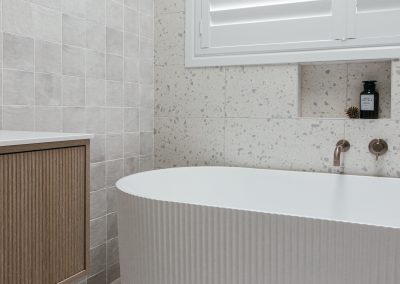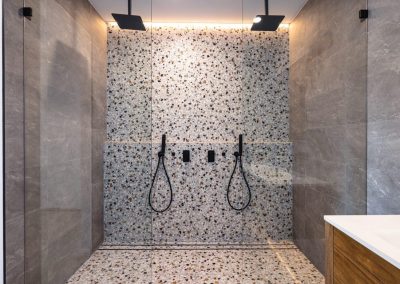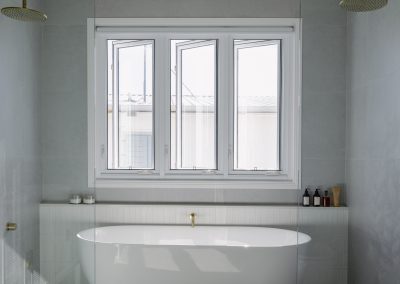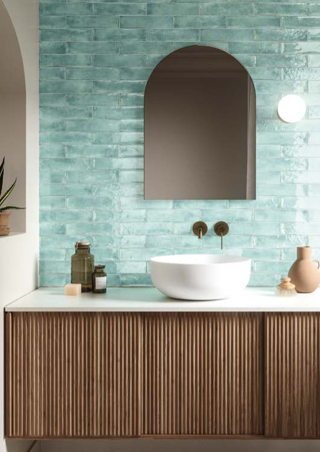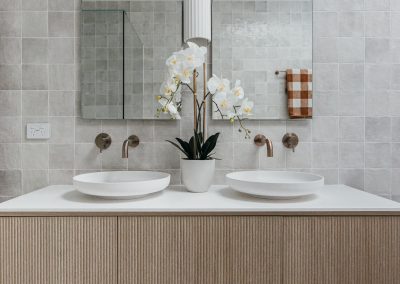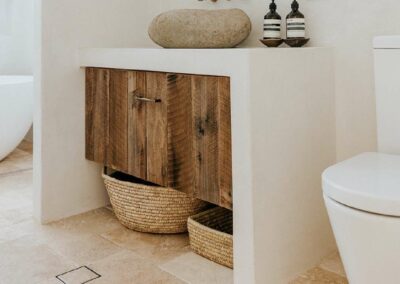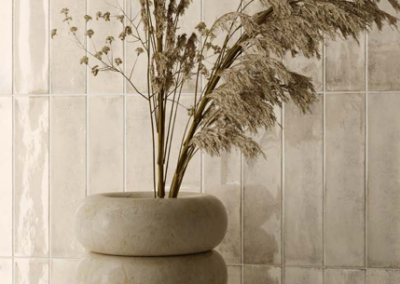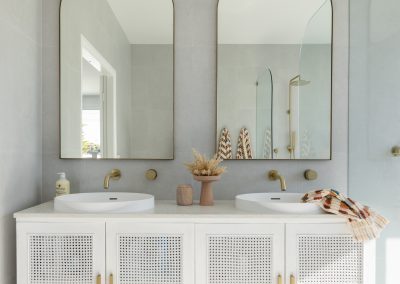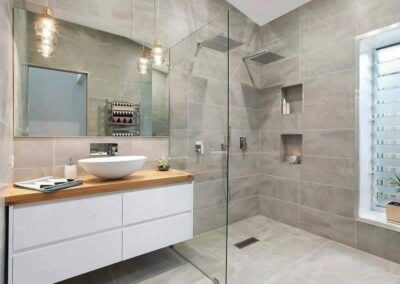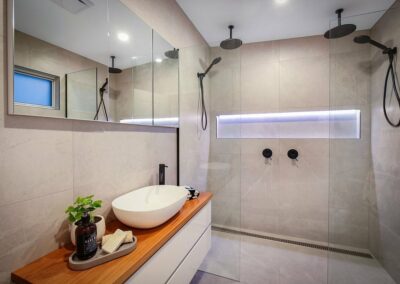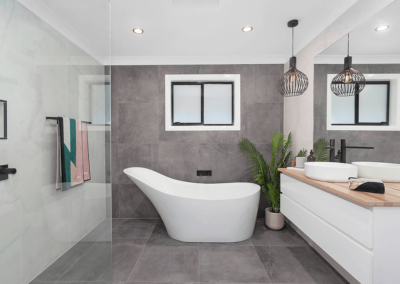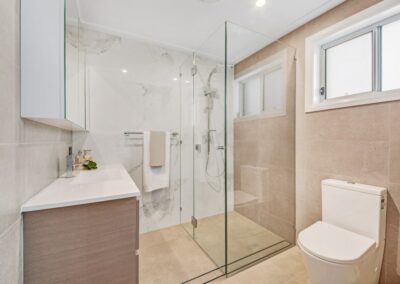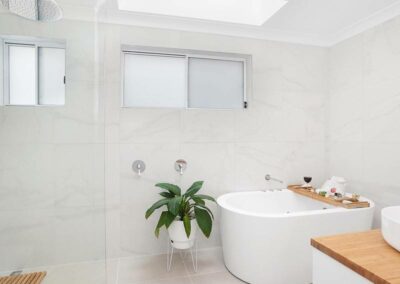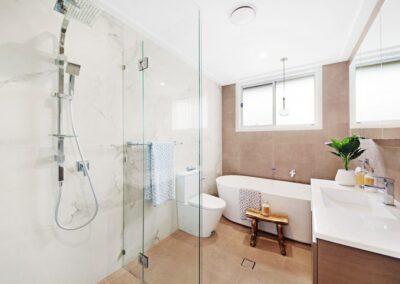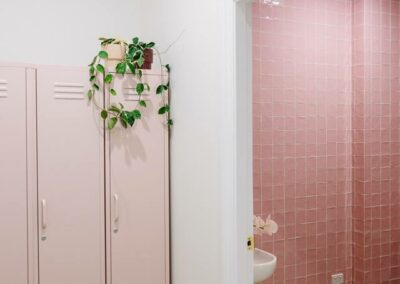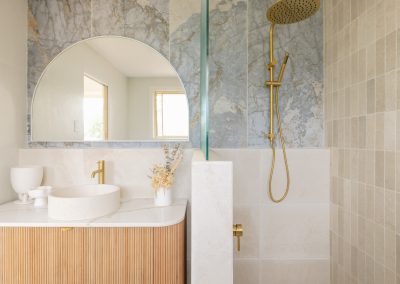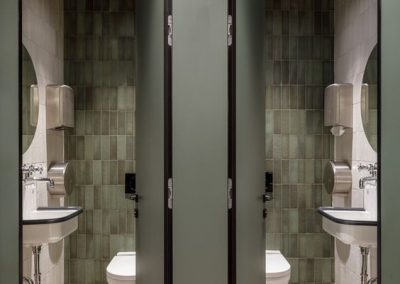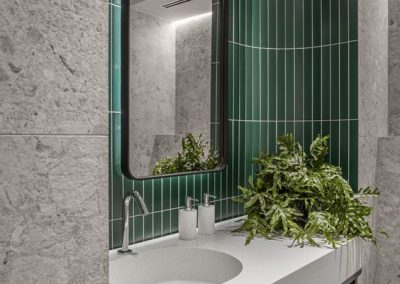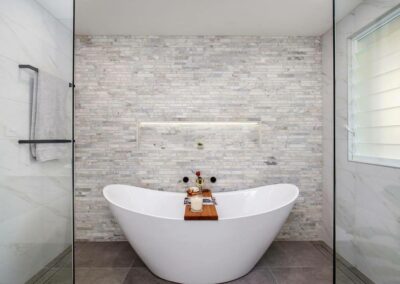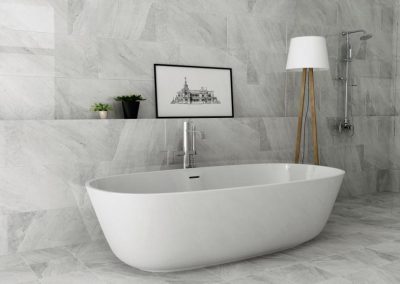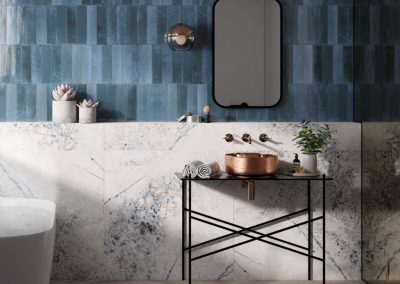Bathroom Tiles
Recreating the look and feel of a bathroom can be extremely rewarding. You have a huge variety of tile designs to consider including subway tiles, mosaics, porcelain tiles, shaped tiles, textured tiles and patterned tiles.
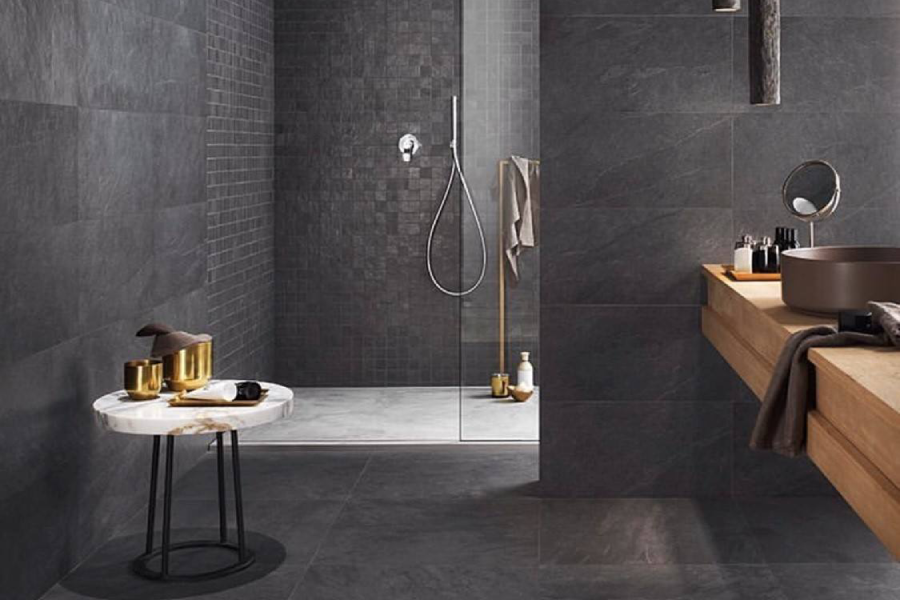
Minimilist
Sleek and simple, this design is defined more by what it lacks. Free from excessive ornamentation or fussy decorations, minimalist designs favour clean lines and a neutral colour palette.
Layouts are usually open and airy, and every piece serves a function or aesthetic purpose.
Materials include stone, concrete and raw timber. If you’re not keen on a home that’s overtly stark and bare, a minimalist base pairs well withother styles.
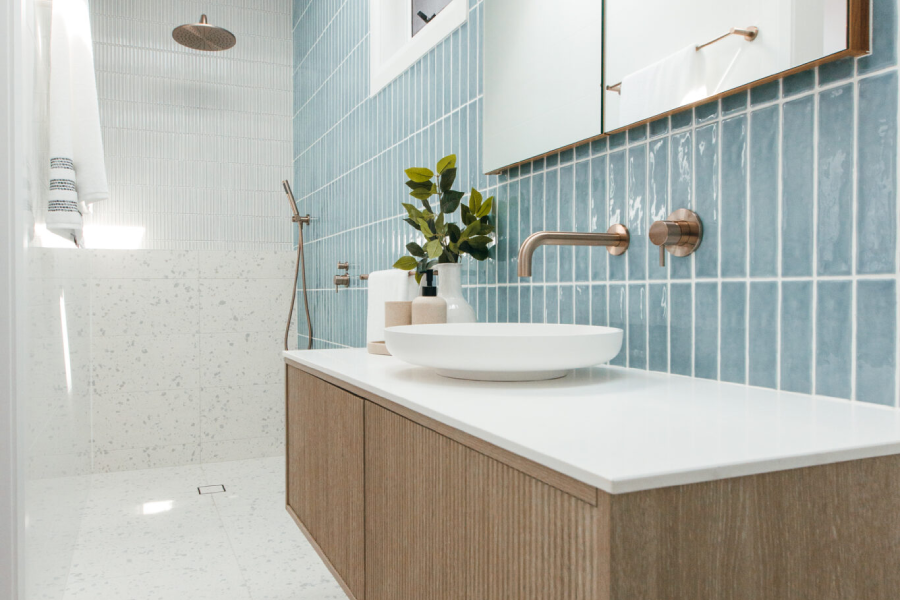
Coastal or Hamptons
Categorised by laid back, free flowing areas and ideally water views, there’s an inherent ease to coastal style. While Hamptons is a more specific style under the banner of Coastal, both take cues from the surrounding environment.
Coastal aesthetics can range from the more luxurious and traditional Hamptons look (weatherboards, sash windows and a colour palette of white, grey and blue) to a more Spanish influenced coastal vibe (white concrete, natural timber and rattan), but all usually embrace natural fibres like linen and cotton, wicker and plants. In terms of colour, you’ll find creamy neutrals interspersed with grey and blue (from light to navy).
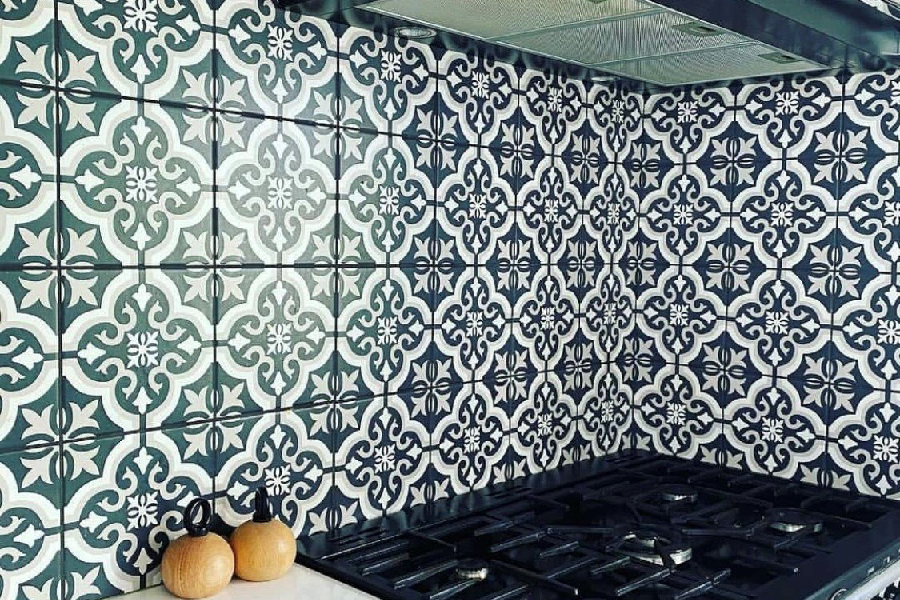
Country or French Provincial
Country is a close cousin of French provincial, which is why they’re paired together. While country style usually takes its inspiration from the quaint houses found in the English countryside, French Provincial is influenced by the style of the French provinces outside of the main cities.
Signified by earthy tones, lots of timber (barn doors and exposed ceiling beams are common), stonework or brick, fresh flowers and cosy textures, both country and French provincial lean heavily into the farmhouse aesthetic. Materials include vintage or rustic pieces, as well as floral and patterned fabrics.
A modern take on this style is popular, but the vibe remains unstudied and thrown together – don’t expect everything to match.
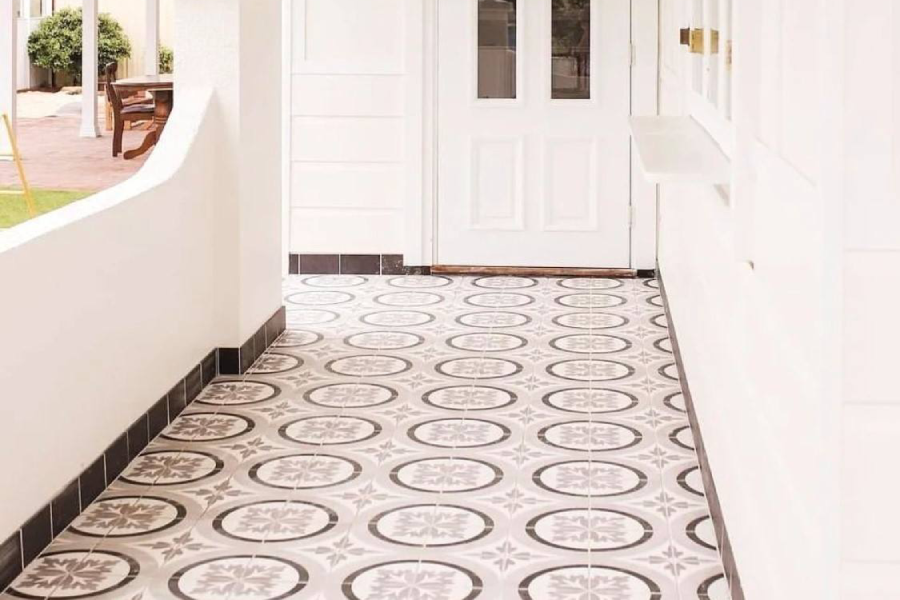
Traditional
This is a classic design style, often seen in European homes with beautiful heritage details. Generally avoiding current trends, this style favours darker timber, ornate pieces and richly patterned fabrics.
Homes are usually ornamental in style, with many decorative touches like curtains and drapes sitting beside lush fabrics like velvet, silk and brocade. Traditional design style plays on the familiar and comforting, offering warmth, cosiness and a sense of history.
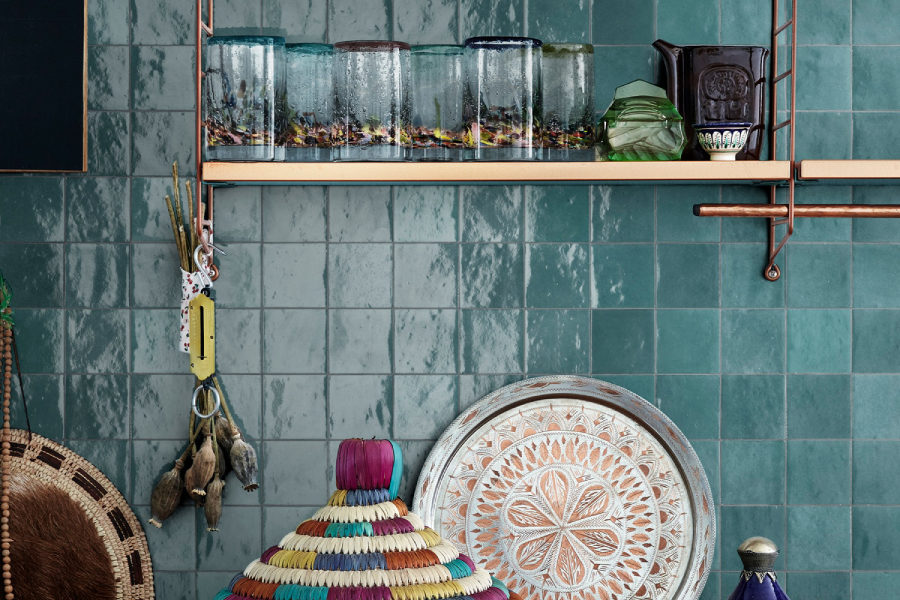
Bohemian (Boho)
Free and relaxed, Bohemian style refuses to adhere to a set of design rules. Instead, it will feature a range of textures, materials and finishes to unique effect.
Known for mixing styles, cultures and eras, there’s usually a strong sense of eclecticism with bohemian design – old pairs with new, opulent pieces reside next to flea market finds, and often there’s no strict colour scheme. Materials include velvet, linen, leather and rattan. Be sure to include fresh flowers and greenery.
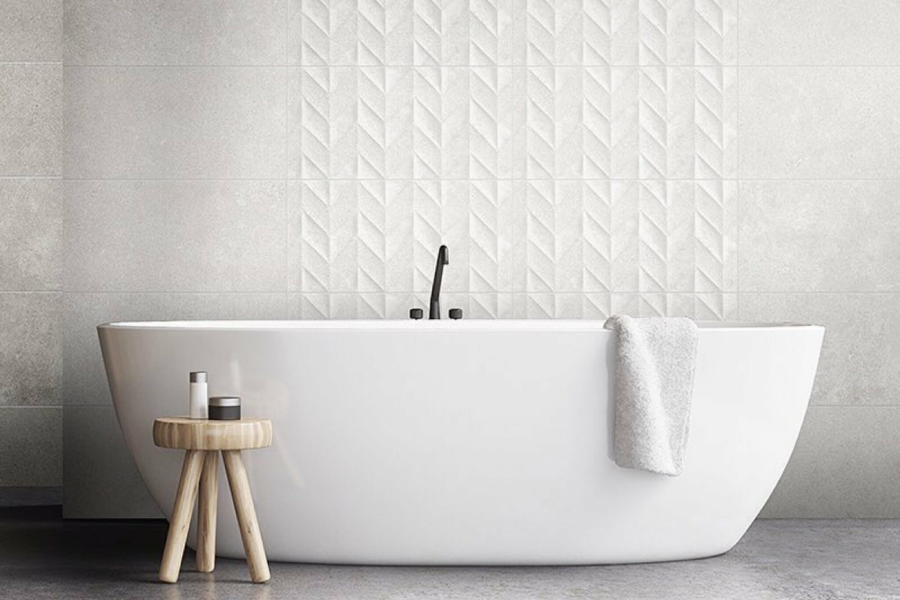
Contemporary
Contemporary design is rooted in the ‘now’. While that might seem vague and open to interpretation, think of contemporary design as current in every sense of the word – usually embracing popular trends and blending a variety of styles.
While the idea of contemporary design will shift every couple of years, you’ll often find a mixture of iconic designer pieces, contemporary art and modern fixtures and fittings. Right now, the contemporary look is a neutral colour palette, with rounded, sculptural pieces taking centre stage, plus sleek, luxurious finishes like marble, concrete and terrazzo.

